In this lesson we’re going to look at Harmonic minor for 8 string guitar and its Modes. We’re using standard tuning: F#, B, E, A, D, G, B, E. Each mode pattern will be 3 notes per string.
Before looking at Harmonic minor for 8 string, first we need to understand the difference between the Natural minor Scale and the Harmonic minor Scale. Natural minor, or just minor, is the 6th mode of the Major scale, also called the Aeolian Mode. In order to get the Harmonic minor scale we need to raise the pitch of the 7th note by a semi-tone.
Turning Natural minor into Harmonic minor
Lets look at the notes of A minor: A – B – C – D – E – F – G.
In order to get A Harmonic minor we raise the 7th note from G to G#:
A – B – C – D – E – F – G#
We can do the same for any minor scale/Aeolian mode. Lets look at D natural minor: D – E – F – G – A – Bb – C
So D Harmonic minor would be:
D – E – F – G – A – Bb – C#
Interval Structure
The interval structure of Harmonic minor is:
Root – M2 – m3 – P4 – P5 – m6 – M7
We can use this to help us work out the notes of any Harmonic minor scale. The diagram below shows how these intervals relate to A and D Harmonic minor:

Harmonic minor for 8 string – Mode 1: Harmonic minor
The first mode we get is the Harmonic minor Scale in Root position. This is similar to the Natural minor Scale/Aeolian Mode but with a raised 7th. Harmonic minor is used in various genres including Jazz, Classical, Metal and Neo-Classical Rock/Metal. A good example of this being used in Metal would be the guitarist Yngwie Malmsteen.
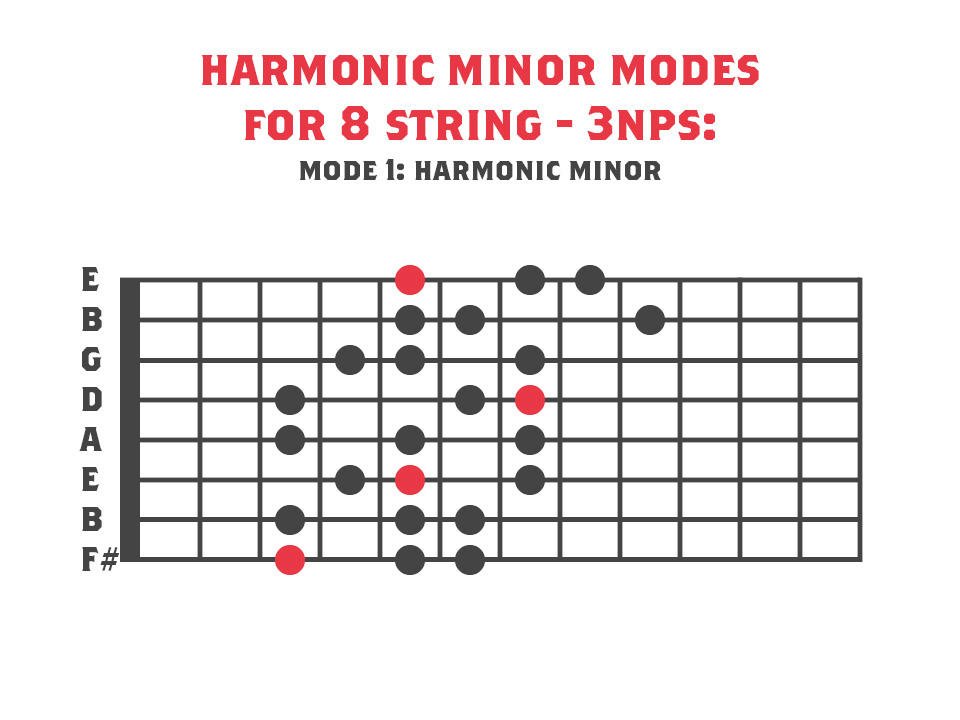
The Chord usually associated with this mode is a minor chord triad and can be extended to a minor(Major7) chord. This is a minor triad with a Major 7th added. For example in A Harmonic minor we would get:
Am = A – C – E
Am(Maj7) = A – C – E – G#
The minor(Major7) chord is similar to an Augmented chord and so has quite a mysterious sound, especially when played as an arpeggio. You can of course derive other chords from the scale by using 9ths, 11ths etc too.
Harmonic minor – Mode 2: Locrian #6
The second mode of Harmonic minor is often referred to as “Locrian Sharp Six”. This is because if we look at the Locrian Mode and raise the 6th note by a semi-tone we get the second mode of Harmonic minor.
For reference, in A Harmonic minor we would get B Locrian #6:
B – C – D – E – F – G# – A
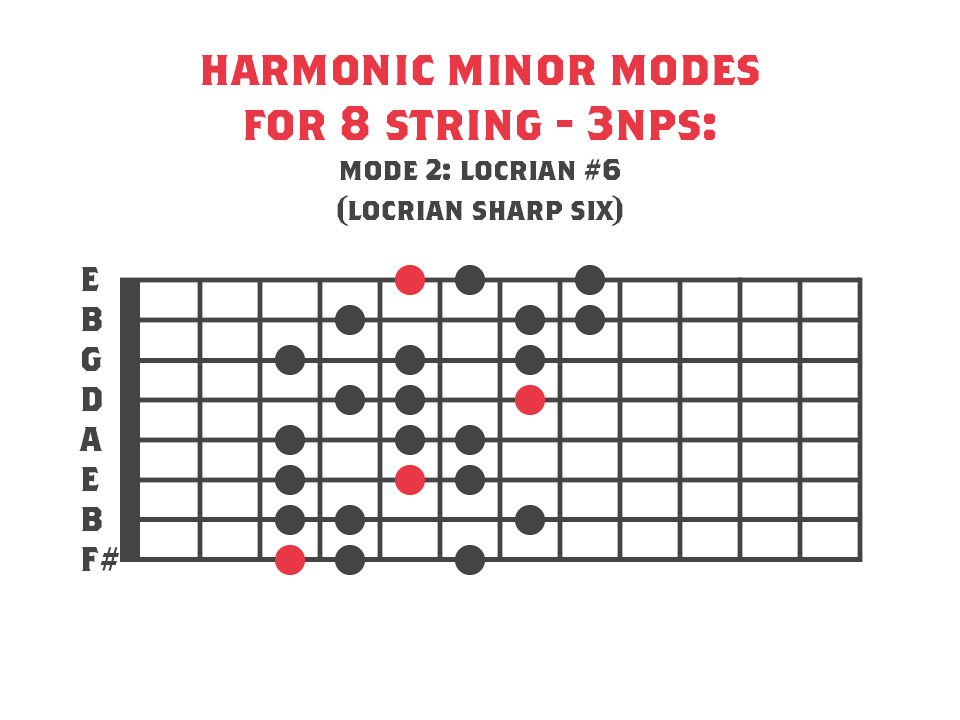
Since this mode has a m3 and a diminished 5th it produces a Diminished triad. If we extend this chord we get a m7b5 (minor 7, flat 5) chord just like the Locrian mode. In A Harmonic minor we get the following chords from the second mode:
B diminished = B – D – F
Bm7b5 = B – D – F – A
We could also create B diminished 7, whilst the G# is actually a Major 6 above B this is the same pitch as an Ab which would be a diminished 7th:
Bdim7 = B – D – F – Ab
Harmonic minor – Mode 3: Ionian #5
The third mode is often reffered to as Ionian #5. This is similar to the Ionian mode but with a sharpened 5th. In A Harmonic minor you could think of this mode as the C Major scale but with an Augmented 5th (G#).
C – D – E – F – G# – A – B
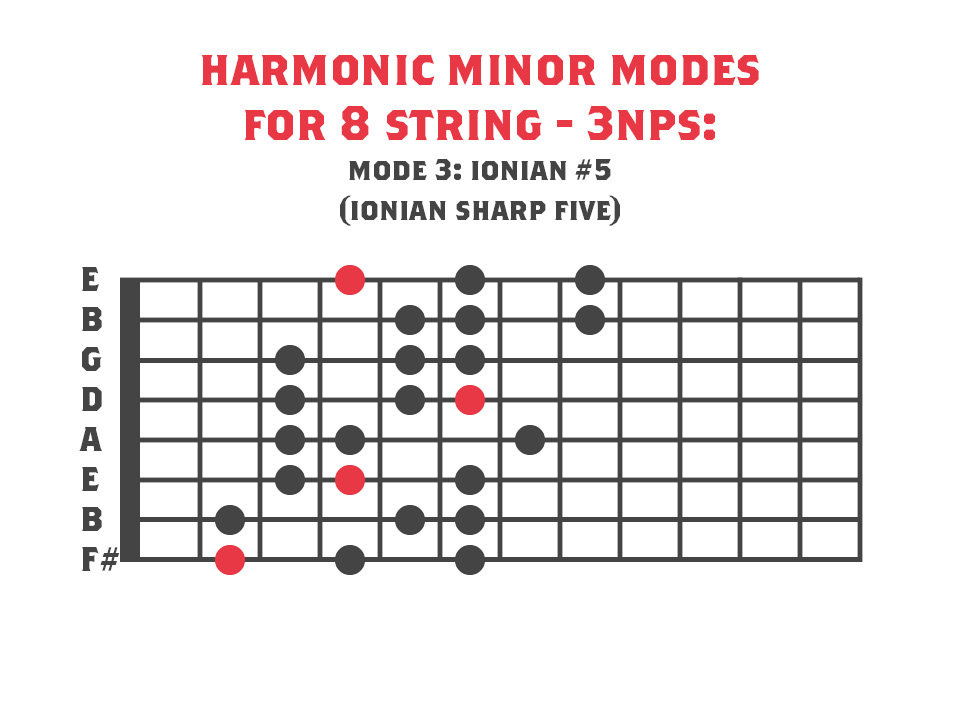
Due to the Augmented fifth this mode will yield the Augmented Chord which can be extended to a Major 7 sharp 5. This is sometimes called an Augmented Major 7 chord. Often a + is used to denote Augmented. Below are two possible chords that can be derived from this mode:
C+ (C Augmented) = C – E – G#
CMaj7+ (C Major 7 Augmented) = C – E – G# – B
Harmonic minor for 8 string – Mode 4: Dorian #4
Dorian sharp 4, as the name suggests is the Dorian mode with a sharpened 4th, in A Harmonic minor this would give us D Dorian #4:
D – E – F – G# – A – B – C
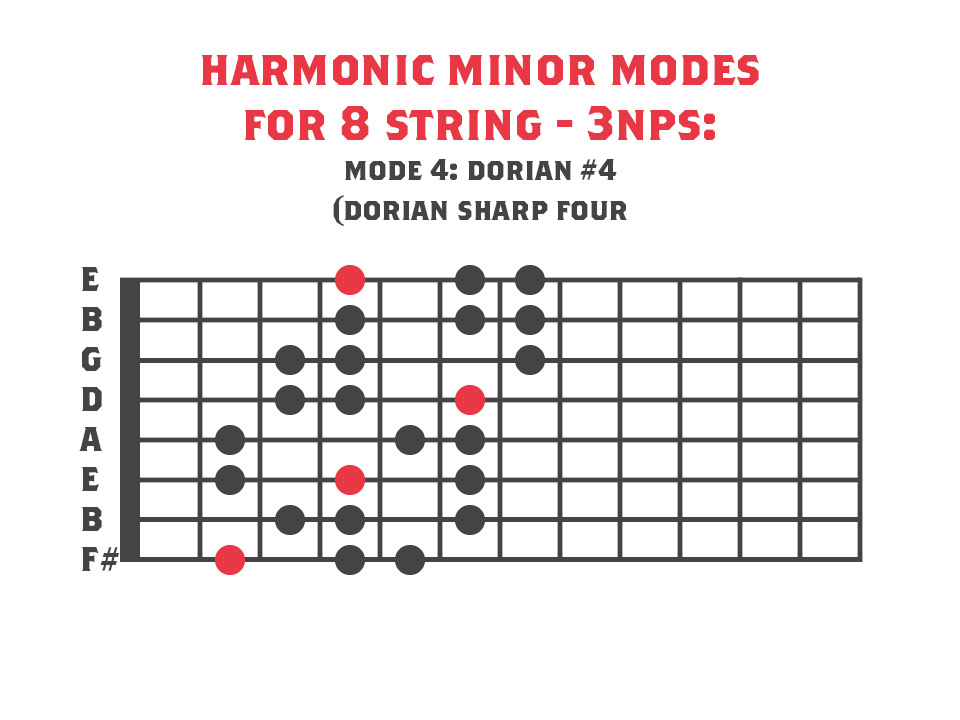
Like the normal Dorian mode we can build a minor chord or a minor 7 chord from this, however if we add an 11th to our chords we get a #11. In A Harmonic minor we could create chords such as:
Dm = D – F – A
Dm7 = D – F – A – C
Dm(Add#11) = D – F – A – C – G#
Since G# and Ab are the same note we could also have D diminished, even though the G#/Ab is technically a +4 and not a dim5:
D dim = D – F – Ab
Harmonic minor for 8 string – Mode 5: Phrygian Dominant
Phrygian dominant is a personal favourite of CJ and I. This mode has a dark sound due to the m2 at the start. In A harmonic minor the notes are:
E – F – G# – A – B – C – D
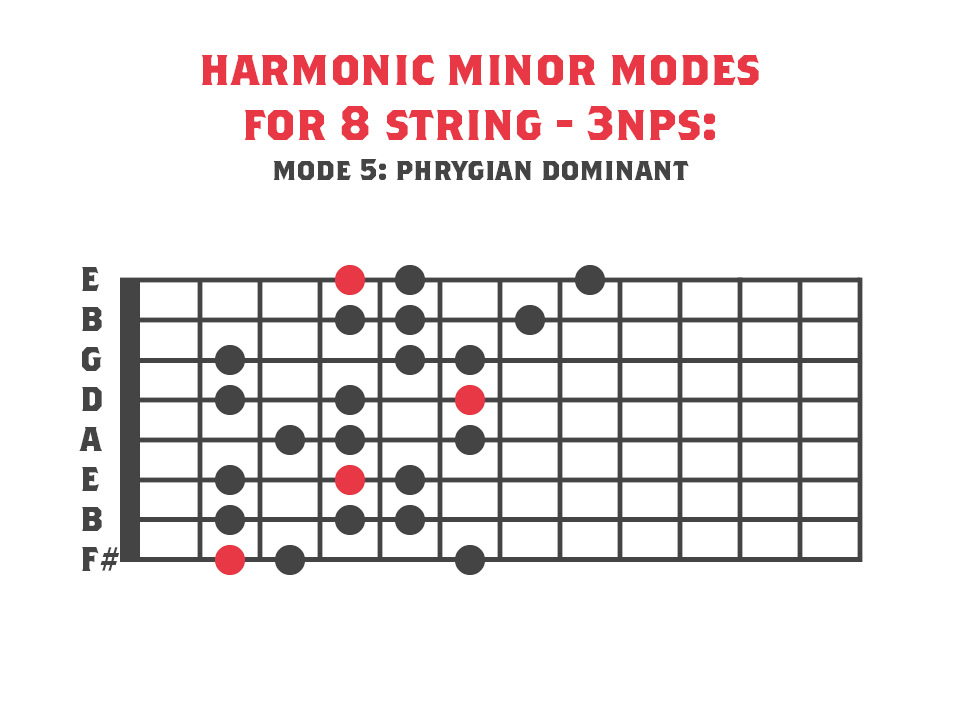
This mode has a Root, Major 3rd and Perfect Fifth meaning that we get a Major chord when we harmonise it. If we add in the 7th too we get a Dominant 7 chord, Root, Maj3 P5 and m7. Once again let’s look at a couple of chords in A Harmonic minor that we get from this mode:
E Maj = E – G# – B
E7 = E – G# – B – D
E7(b9) = E – G# – B – D – F
Harmonic minor for 8 string – Mode 6: Lydian #2
Lydian Sharp 2 is interesting since technically it has a minor third AND a Major third. However in the context of this mode, since the note which is a minor third interval above the root is the second note of the scale we refer to it as a sharp 2nd instead. In A Harmonic minor the notes would be:
F – G# – A – B – C – D – E
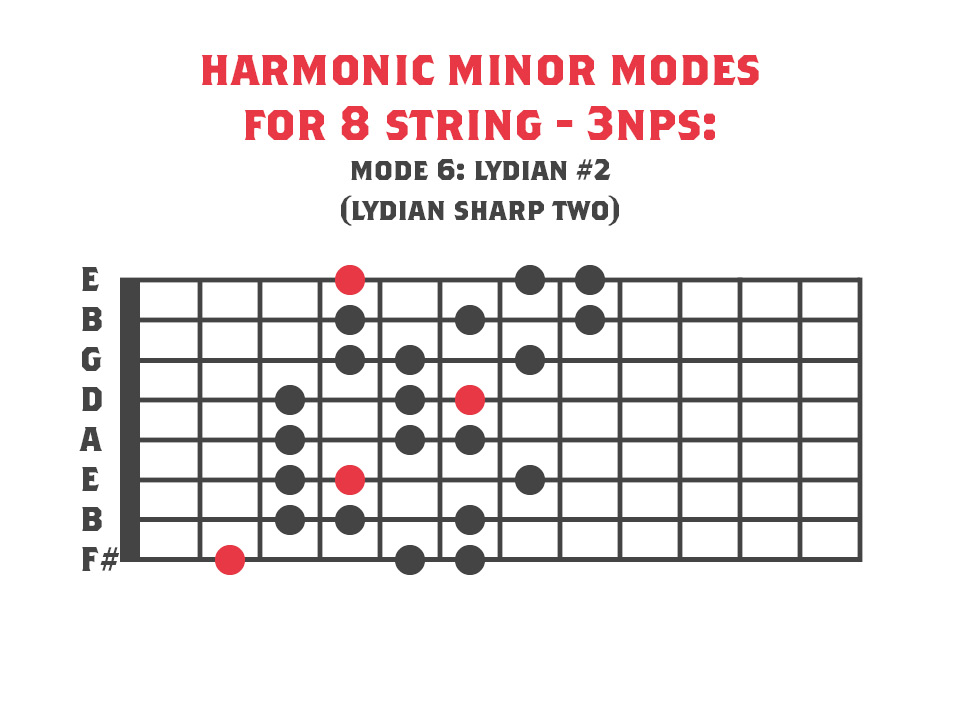
This scale will yield a Major chord or Major 7 chord. However since the sharp 2 is the same pitch as a m3 we could also form a minor chord and m(Maj7) chord. For example in F Lydian #2 we could form F minor (F – Ab – C) Since Ab is the same pitch as G#.
F Maj = F – A – C
F Maj7 = F – A – C – E
Fm = F – Ab – C
F Maj7(#9) = F – A – C – E – G#
Harmonic minor for 8 string- Mode 7: Super Locrian
The seventh mode of Harmonic minor is Super Locrian. The intersting thing about this mode is that it has a flat 4th which is enharmonically equivalent to a Major third. It also has a diminished 7th which is the same pitch as a Major 6th. In relation to A Harmonic minor the notes would be:
G# – A – B – C – D – E – F
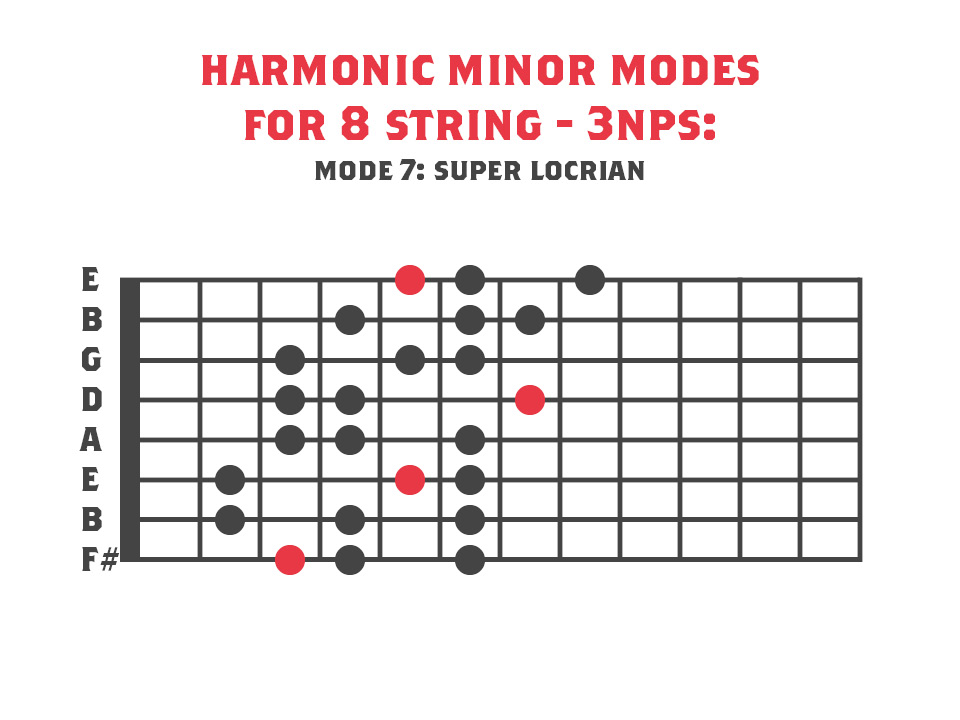
From this mode we get a diminshed chord. If we include the 7th we get a Diminished 7 chord, very dark sounding! These chords work well as passing chords to create tension and can be used as Arpeggios for a very aggressive feel. Here are a couple of examples in G# Super Locrian (Mode seven of A Harmonic minor):
G# Dim = G# – B – D
G# Dim7 = G# – B – D – F
Well that’s all seven of the modes for Harmonic minor for 8 string guitar! We’ve looked at examples in A Harmonic minor so try them out in different keys too!
For more on modes check out our posts on Harmonic minor for 6 string, 7 string and 3 Octave modes. Also check out the Major scale modes starting here.

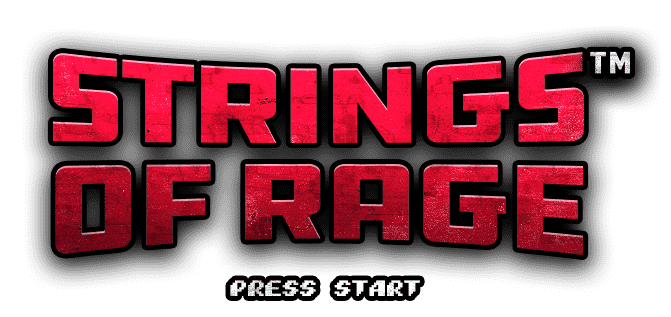

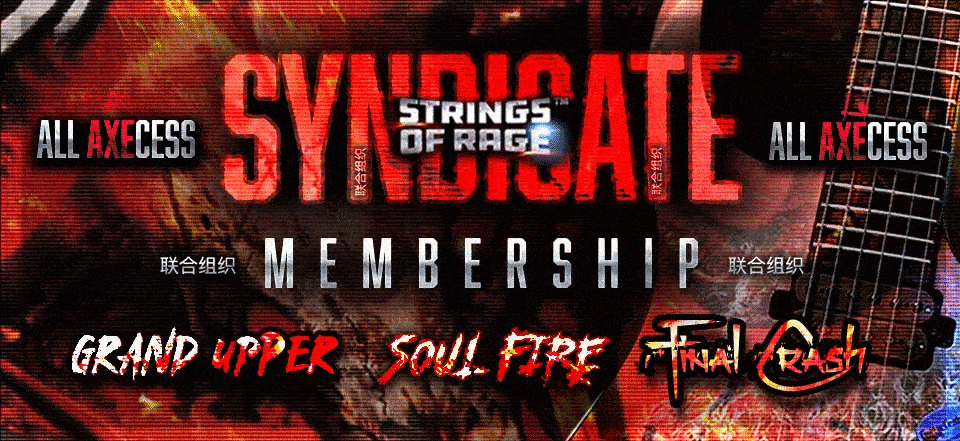
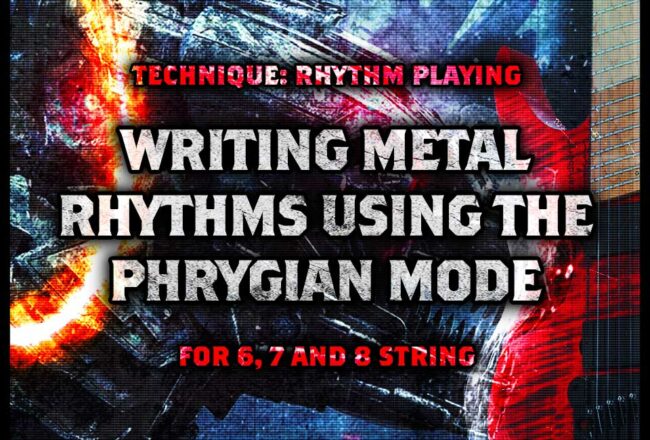








No Comment